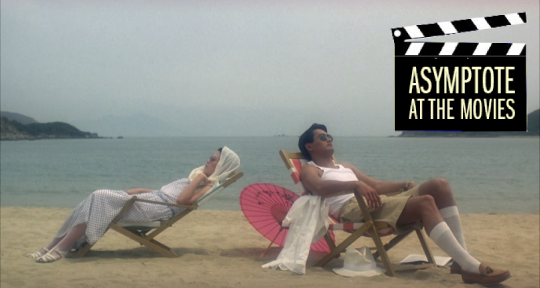The allure of Eileen Chang’s prose is a bewitching combination of insight and precision—sensual acuity married with an editorial scrupulousness. Earning widespread renown with renderings of the delicate, tenuous relationships in the volatile societies of her time, Chang has become known for her ability to create vivid, lasting images. It’s no wonder, then, that her works have served as the material for several celebrated films; today, our blog editors are taking a look at Hong Kong director Ann Hui’s adaptation of Chang’s rich novella of courtship and compromise, Love in a Fallen City (1984). What follows is a discussion on the transposition of Chang’s “cinematic” language, the pitfalls of overly faithful adaptation, and the difficulties of portraying interiority.
Shawn Hoo (SH): I have always thought of Eileen Chang’s prose style—her montage of overlapping timelines; her patient, exquisite visualising of scenes; her keen ear for dialogue—as having an affinity with the language of film. That is, her stories come to me almost ready-made for film. Unsurprisingly, Chang herself did write fourteen screenplays (a neglected part of her oeuvre), and several of her stories have been adapted by celebrated Sinophone filmmakers such as Stanley Kwan, Ang Lee, Hou Hsiao-hsien, and of course, Ann Hui (all of whom have no doubt disseminated Chang’s legacy to new audiences). A literary style that lends itself so naturally to cinema has its pleasures and, in some cases, its perils when it comes to adaptation. Just hear what Hui admits when asked about her interpretation of Chang’s story: “There is no interpretation at all,” she says, “It’s more a representation. The novel is so good that adding anything at all seems impossible.” If by “representation” Hui means to hew close to the original text, then this bears out in the film’s dialogue, which is used almost verbatim in its Cantonese translation, as well as in its rendering of key scenes which appear largely unmodified on screen. Consequently, what is arguably Chang’s most loved story has had a relatively lukewarm reception in its filmic context (and in Hui’s otherwise prolific oeuvre). Faithfulness—that contested word so frequently used to discuss translation—it seems, does not always reward.
This for me raises questions about the merits of transferring what is ostensibly cinematic writing onto the film medium, and how their relationship—as well as mutual realisation—can be understood beyond a scene-for-scene, image-for-image correspondence, which is at least how I conceive of Hui’s approach: too faithful. To be clear, there is much to admire in this film, especially Hui’s treatment of early 1940s Shanghai and Hong Kong. Whereas the former has the camera concentrated on the decaying, claustrophobic Bai household and moves between adjacent rooms only to hear Liusu’s relatives badmouthing her, the latter moves liberally between the historic Repulse Bay Hotel, couples dancing to a jazz number at the Hong Kong Hotel, outdoor Chinese opera, and a rendition of Greensleeves all heard while Liusu and Liuyuan walk the city. The film’s construction of these two settings dramatises the shifts in Liusu’s psychology, one that liberates her from the sad huqin of an insular household into the cacophonous colonial cosmopolitanism of British Hong Kong which signifies new beginnings. Or rather, three settings: if we distinguish Japanese-occupied Hong Kong for its distinct aural and visual qualities. Here, I think Hui successfully leverages on the medium to elaborate on Chang’s vision, that is the role of contingency—of situated time and place—to precipitate love.
At this point, I wonder if either of you might have a different take on the relationship between representation and interpretation, to borrow Hui’s own distinction?
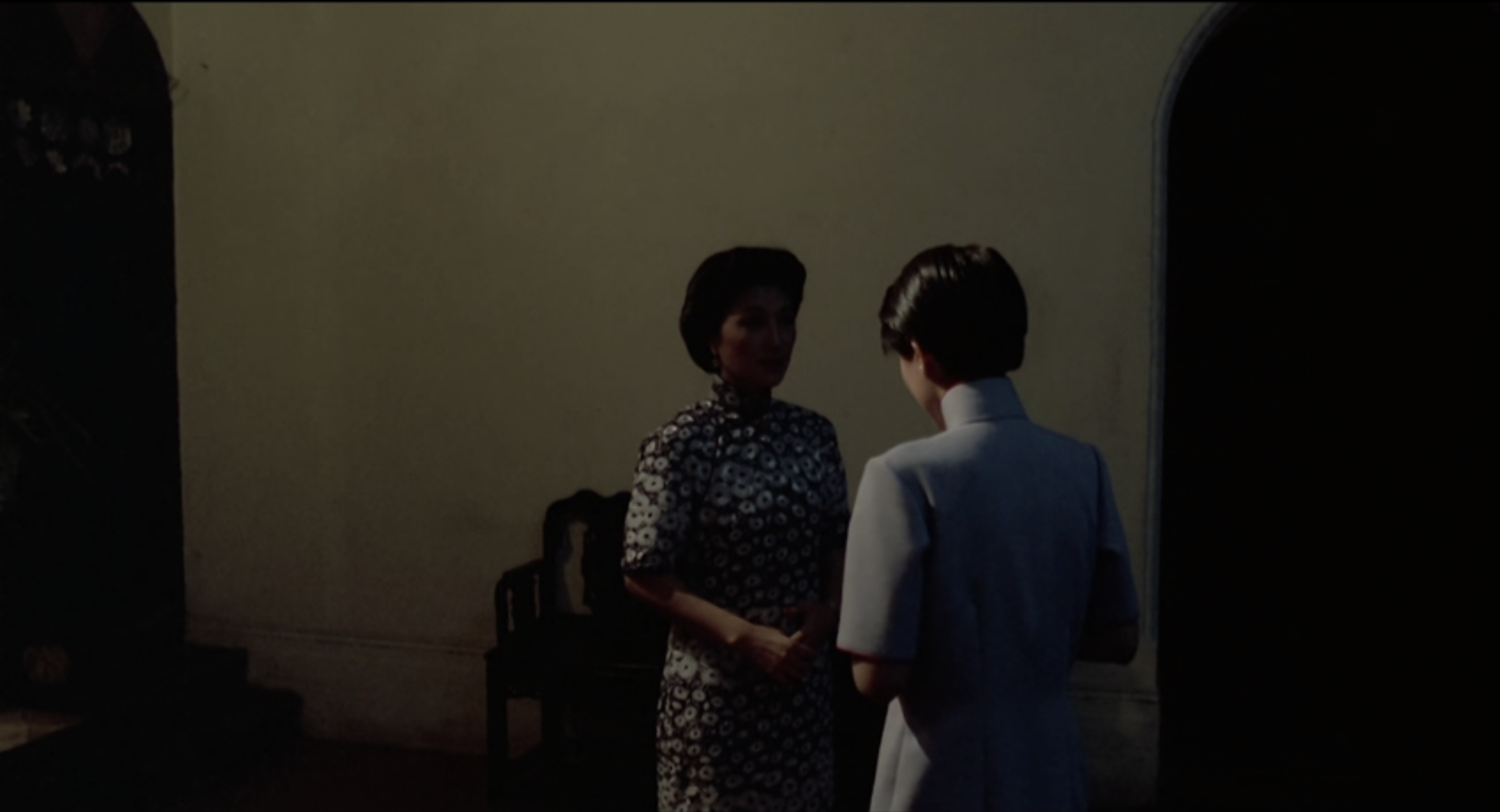
Allison Braden (AB): The film did strike me as a fascinating testament to the idea that extreme faithfulness can be, paradoxically, a detriment to adaptation. Conventional wisdom holds that books deal in emotions, plays in dialogue, and films in images. The limited visual scope of the first part of Love in a Fallen City—the repressively close Bai home, the tight shots in various hotel settings—calls to mind a teleplay, with more reliance on dialogue than images. This approach shortchanges Liusu’s interiority and writer Eileen Chang’s careful attention to emotional nuance. I spent the initial Hong Kong portion of the movie baffled by Liusu’s ambivalence. She clearly needs to escape her family but also seems determined to make a match for herself rather than meet anyone else’s expectations. “The first marriage is for your parents,” she says, “the second is for yourself.” But can she afford to dawdle? To repulse a supremely eligible suitor? Sure, Fan represented a foreign sensibility and exhibited domineering and misogynistic traits, but Liusu’s alternate reactions—charmed and put off—and quiet (is it too much to say sulky?) responses to his overtures didn’t offer a sufficient window into her feelings. The viewer is left to project her own interpretation on Liusu’s mystifying reticence, which I see less as intentional ambiguity and more as a failure to adequately adapt the interiority of the novel to a medium that relies on a different form of exposition.
During the invasion, the film opens up. Wider shots and images of town make the setting a stronger part of the story and root the film in Hong Kong more powerfully than previous scenes there. Only toward the end did I feel like the film graduated from teleplay to truly cinematic movie. I agree, Shawn, that the changes in setting and clear differences between them—the bright, airy Hong Kong hotel versus the dark, claustrophobic family home—allows Hui to visually complement Chang’s argument that love can be contingent on time and place. However, the earlier failures to get in Liusu’s head and help us understand her initial reluctance to love Fan takes the air out of that argument: What changed? How did her emotions evolve across time and place? How did the interlude at home in Shanghai alter her feelings for Fan? Why did the invasion precipitate love? I can speculate, but I suspect the film would have been stronger and truer to Chang’s conception, had it capitalized on the medium to address these questions more clearly.
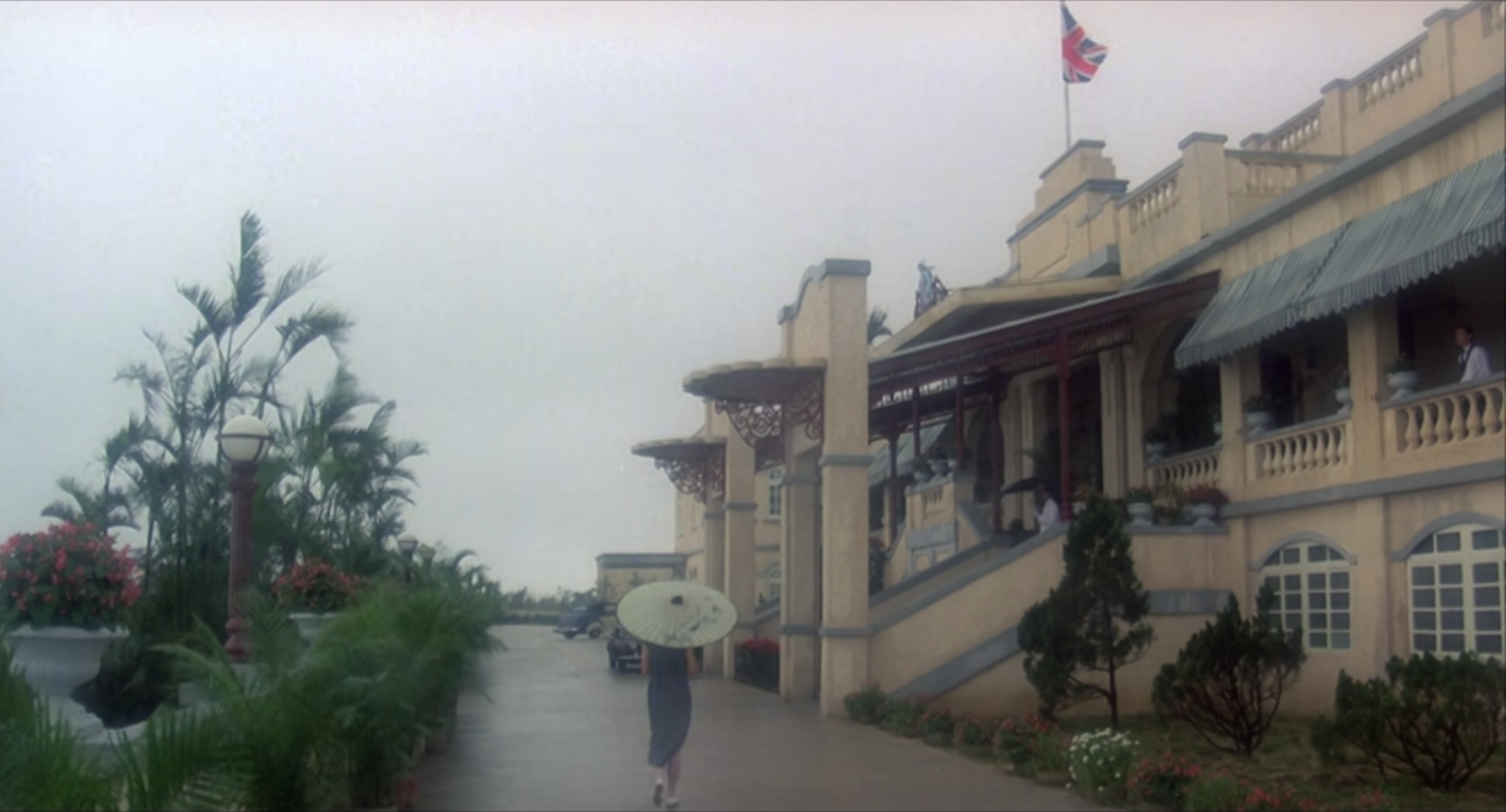
Of course, part of the issue here is likely subpar subtitles, which don’t reflect the poetry or depth of the original language or Chang’s deliberate phrasing. In some places, they struck me as anachronistic (e.g., “You must be totally fed up”). There were scenes, like the one where Fan and Liusu are dancing at the Hong Kong Hotel and Liusu makes contradictory statements, where I think the subtitles elided the nuance and—I’m guessing—coy suggestiveness of Liusu’s dialogue and instead left me thinking, “What is she talking about?”
So, in my case, the adaptation and subtitles put layers of distance between me and the original story. What was your experience, Xiao Yue? Did you both feel as removed from Liusu’s emotional evolution as I did?
Xiao Yue Shan (XYS): I’m really glad you pointed that out, Allison. I shared very similar apprehensions throughout the film—it was so frustrating to see the portrayal of Liusu dimmed to a sullen platitude, when what I recalled so vividly from Chang’s prose was a dramatically enthralling figure, as animated by fits of mercurial temper as she is by prolonged, shadowed contemplation. Eileen Chang writes with such conviction about the various nature of feminine ardor in her time: how it is concurrently aching with humiliation, enchanted with promise, fraught with exchange, and poisonous with the terrifying notion that the person who can be loved by a man is the person you most want to be. Liusu embodied this broil of maledictions with an internal immensity; she is at once desperate to maintain her potentialities of attraction, yet rejoices secretly in the untangling of her tethers—“. . . fealty and filial piety, chastity and righteousness: distant tales that had nothing to do with her.”
The nature of successive images is not to divulge, but to resonate in our visual compendium—each frame we see relies on the structure of what we have seen before, echoing backward. Literature works differently. In language, we use the known fragments of words to establish novelty (the always-new, gaping world of inner-ness). To put it into a simple, inadequate sense, we are pushing them into the future. I think this is why, Shawn—when you speak of the cinema of language being strangely incompatible with the language of cinema here—we are overwhelmed with the vast gorge of difference. Where Eileen Chang is working at the building of the avenues of the mind as it leads outward and enacts into action, Ann Hui is entrapped into the vocabulary of her medium, which only allows the external to reflect upon the individual.
Of course, cinema has its own methods of navigating this vacuum (I’m thinking of everything from the patient silences of Hirokazu Koreeda to the brilliant buoyancy of Pixar’s Inside Out), but unfortunately, Hui often fails to have her characters interact with the nexus of their world in any way that’s visually meaningful. There are certain exceptions, of course—the dreamy sepia lighting as the couple dances in the aging English-style ballroom, the occasionally striking use of shadows to designate Liusu’s duality—but there is no fervour, no chemistry between our two lovers, and perhaps even more sadly, an equally vacuous space between them and the camera.
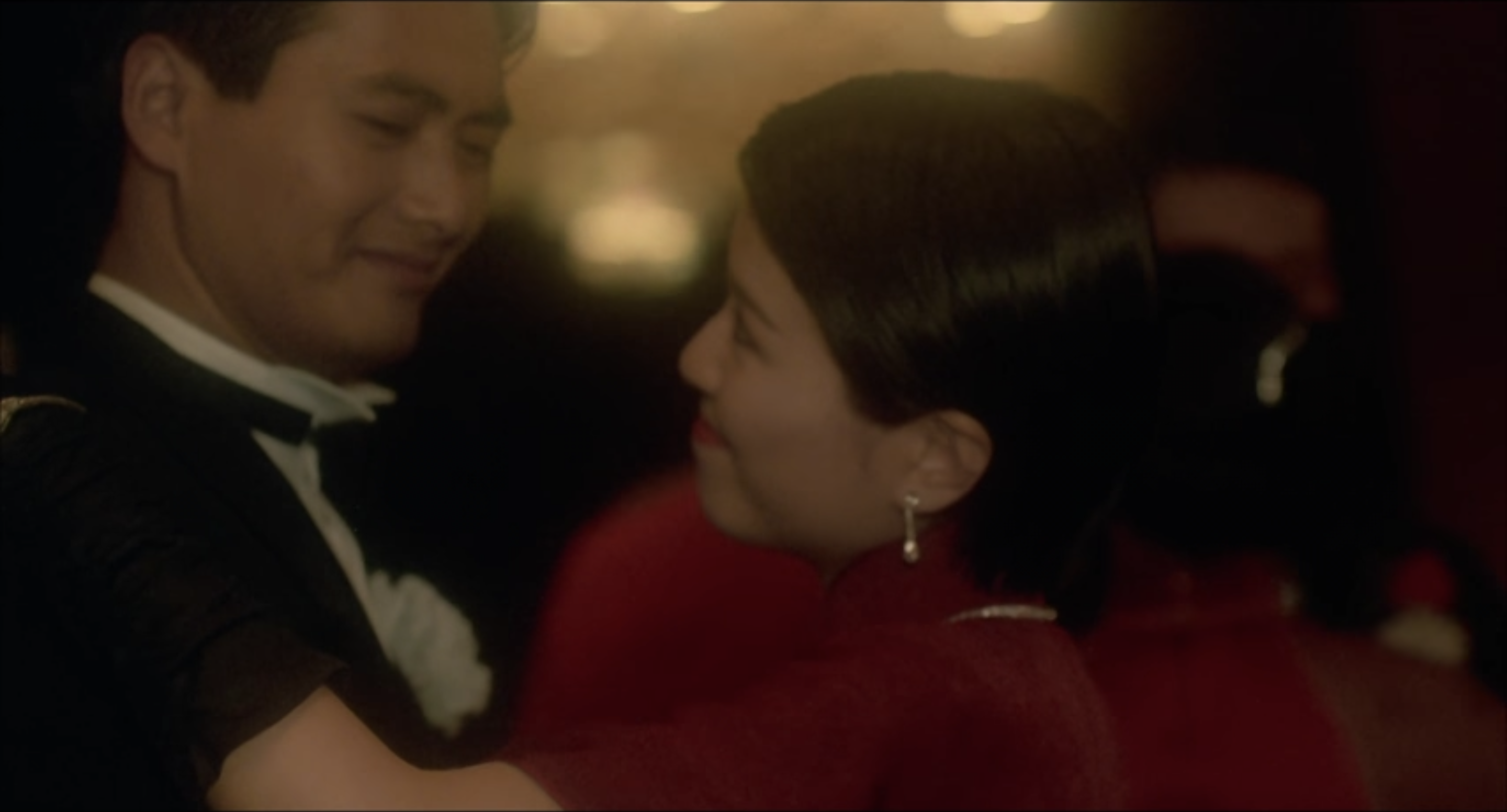
The previously mentioned ballroom scene is really emblematic of this charmlessness (Allison, I don’t think it’s just the subtitles!). I am as soft to the cleanly-donned, square-jawed Chow Yun-fat as any other, but I actively recoiled as he spoke that that contentious line: “A real Chinese woman is the most beautiful in the world.” The way that Zhang wrote it, it speaks to the very unreality of a real Chinese woman, and how the continual dream of her forces her into existence. It is a line of desolation, yet it is delivered instead only with all the slick aplomb of salesmanship.
Our shared disposition of textuality will likely lead to a consensus on this, but I respond very strongly to dialogue in films. Though, as Shawn said, the conversations were essentially transposed, they retained none of their verticality, their fullness, in performance—perhaps because so much of what is spoken in Love in a Fallen City is resting unsteadily atop a staggering architecture of what is not said, what in fact cannot be said. Did the two of you also find this hollowness jarring?
SH: Quite rightly, the both of you have pointed to the film’s inability to access Liusu’s interiority. Whereas Cora Miao plays a Liusu who seems only to be capable of being swept along by the glib nonchalance of Chow Yun-fat, Eileen Chang’s Liusu is in fact very much an expert at studying other people’s motivations and appreciating her position, however disadvantaged, in each situation, especially with the man she is entangled with. When people start addressing her as Mrs. Fan, Liusu makes the following observation about Fan, the “wicked man” (in Karen S. Kingsbury’s translation): “Whenever they were in public, he made sure to give the impression of affectionate intimacy, so that now she had no way to prove that they had not slept together. She was riding the tiger now, no way to go home, no way to rejoin the family; she had no option except to become his mistress.” It is this calculated sharpness—the way she weighs her next move, chooses to play her cards—that we don’t get in Hui’s film. At moments like this, I do wish more care was taken to tease out Liusu’s interior estimations—although not necessarily by representing them as voiceovers of interior monologues. As Allison said, a lot of speculation can be done on the part of the audience, but what I might have wished for is a stronger vision in the script or direction that gave me a “reading” of the story. I guess that means I see adaptation as an act of compelling interpretation: the most stirring adaptations should demonstrate a singular point of view—not unlike a literary critic’s—in relation to the source material (even if I might not personally agree with said point of view). The wholesale citation of a paragraph from the book superimposed onto a scene of the hotel’s wreckage at the end, especially, just didn’t cut it for me—as students of literature, we’re taught never to just quote!
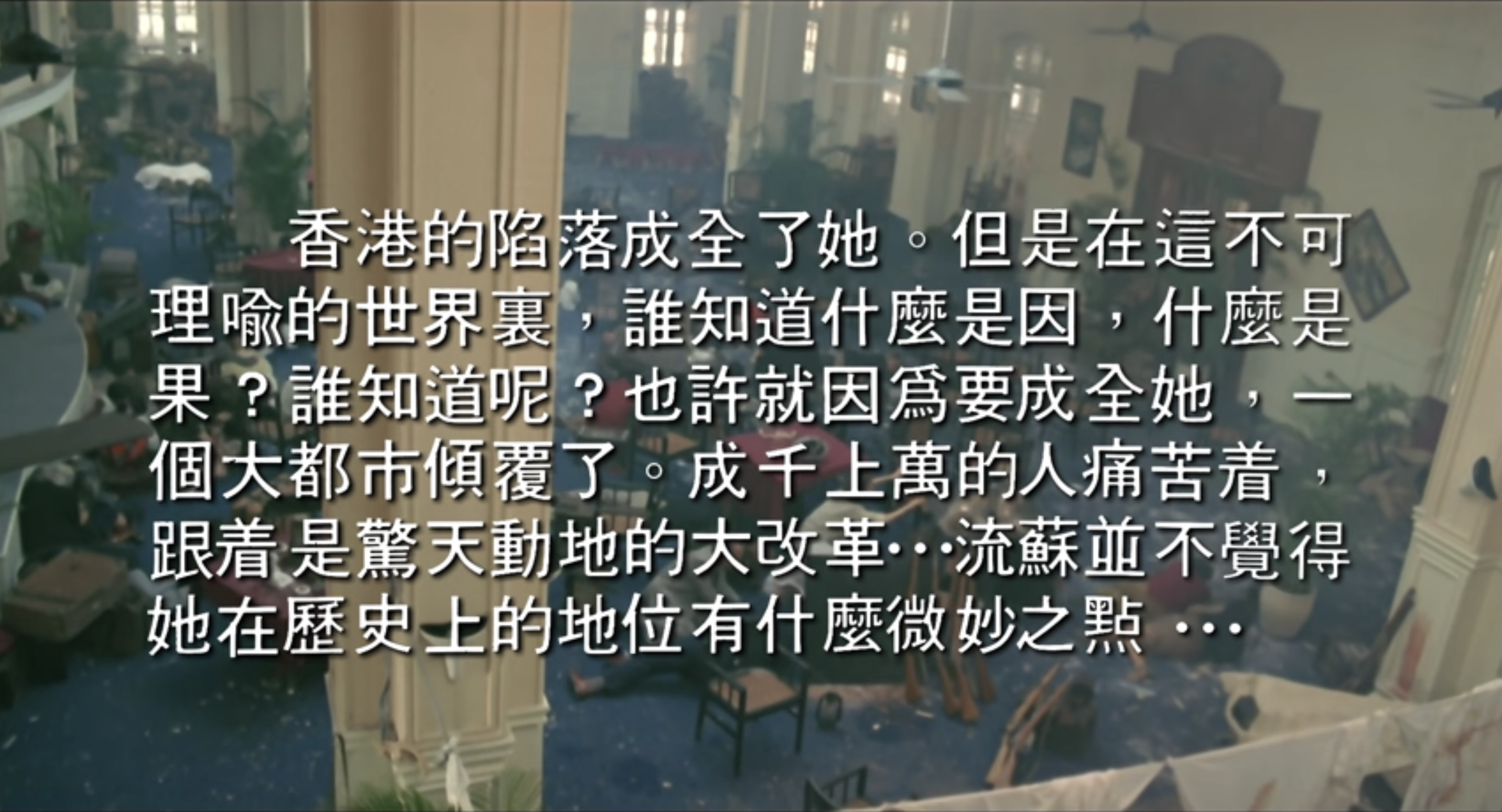
The other point that, Xiao Yue, you brought up is how Love in a Fallen City is built upon what remains unsaid—which I agree with wholeheartedly. That’s why the verbosity of the early scenes can sometimes strike me as false, when the audience is not given access to Liusu’s rich interior life and the kinds of contradictions latent in her, even as she projects an external poise. It is in fact when the eloquence of the film’s first half, by necessity, gives way to the stuttering guns and scattered bombings in the final third that I feel the film really begins to appreciate the architecture of silence. I did quite like the final third of the film because of that: there was no need to say much—now that they have been spoken for.
AB: The danger of relying too much on audience speculation to fill in the characters’ motivations and thought processes is that it tends to reinforce stereotypes, as viewers without enough information will fill in the gaps with low-hanging fruit—dominant ideologies and facile characterizations. This undermines the entire project of translation. I noticed myself having to resist that tendency as I struggled to understand Liusu’s response to her situation and Fan’s interest in her. I took Hui’s outlines and began to colour in characters from dominant narratives: a domineering misogynist and a woman who couldn’t make up her mind.
I also enjoyed the last third of the film, Shawn, and I wonder if we could speculate about strategies to have improved the earlier parts. From our vantage as translators and moviegoers, what adaptation techniques could have been used to let the audience in on the nuances of Liusu’s thoughts and feelings? Since films deal in images, were there scenes from the book that could have better represented the characters’ interiority? Finally, I’m curious what adaptations you all believe tackle this challenge successfully. One that springs to mind for me is Call Me by Your Name, Luca Guadagnino’s 2017 film, adapted from the book of the same name by André Aciman. The events of the novel take place in Italy, but the story prioritizes interiority to the extent that you could almost say it’s set in protagonist Elio Perlman’s mind. It’s stunning how, in your words, Shawn, an “architecture of silence” can help convey so much of the mind’s inner workings, a technique used with emotionally moving results in Call Me by Your Name. How could the source material of Love in a Fallen City be leveraged to similar effect?
XYS: Even though Shawn mentioned that voiceover might not be the most elegant device to assimilate the written psyche, narration did occur to me as an obvious method for the page and the screen to correspond. The reproduction of text can be incredibly effective if incorporated inextricably into the script—I’m thinking of Stephen Daldry’s The Hours, not an adaptation but a masterful response to Virginia Woolf’s Mrs. Dalloway, in which certain lines from the novel fuel the flame of a dramatized entanglement of intersecting lives, choices, and generations—both within and beyond Woolf’s text—stemming from the happenings of the deliberate, startling stream-of-consciousness. It seems that the beginning of the film, which opens with a depiction of the author’s suicide as the farewell letter to her husband is read overhead, is one of the most haunting and remarkably emotive scenes in contemporary cinema. I think the cinematic version of Love in a Fallen City likely could have benefitted from a personal narration, switching from Chang’s omnipotent third person to an intimate first, unfolding the enigmatic, torn nature of Liusu by allowing her some method of uncompromised speech—the exceptional human quality of telling the truth to oneself, in one’s own mind. Even a simple foundational setting for Liusu’s intentions or qualities, with an isolated utility of voiceover, likely would have provided the film with its necessary saturations of indecision, tradition, and compromised freedom. Hou Hsiao-hsien’s Millenium Mambo depicts a similarly inscrutable young woman at its centre, only her enthralling voice sets into context the nihilist, claustrophobic chambers of her mind, delineating the scaffolds of her identity.
I think another way might be in what both of you remarked upon—the latter end of the film, in which voice is given over to the clamour of the atmosphere. In the regard of certain visionaries, places speak: the old Tokyo of Ozu, the Tehran of Kiarostami, and (need I even say?) the Hong Kong of Wong Kar-wai. This film might have done more to beckon the intricate language of spaces out of the various settings—prolonged contemplation with a sight that, in Robert Bresson’s words: “make[s] visible what, without you, might perhaps never have seen.” Hong Kong and Shanghai are both such visible cities, by which I mean even their facades expose a certain eagerness to be seen, a story that beckons to be told. The Shanghai of Lou Ye’s Suzhou River, for example, by turns dense and desolate, speak so profoundly to the desperation of love and connection that plays throughout the film. I wished sometimes that Ann Hui’s camera would linger for awhile, to let these vistas alight in their visual language what the spoken perhaps could not.
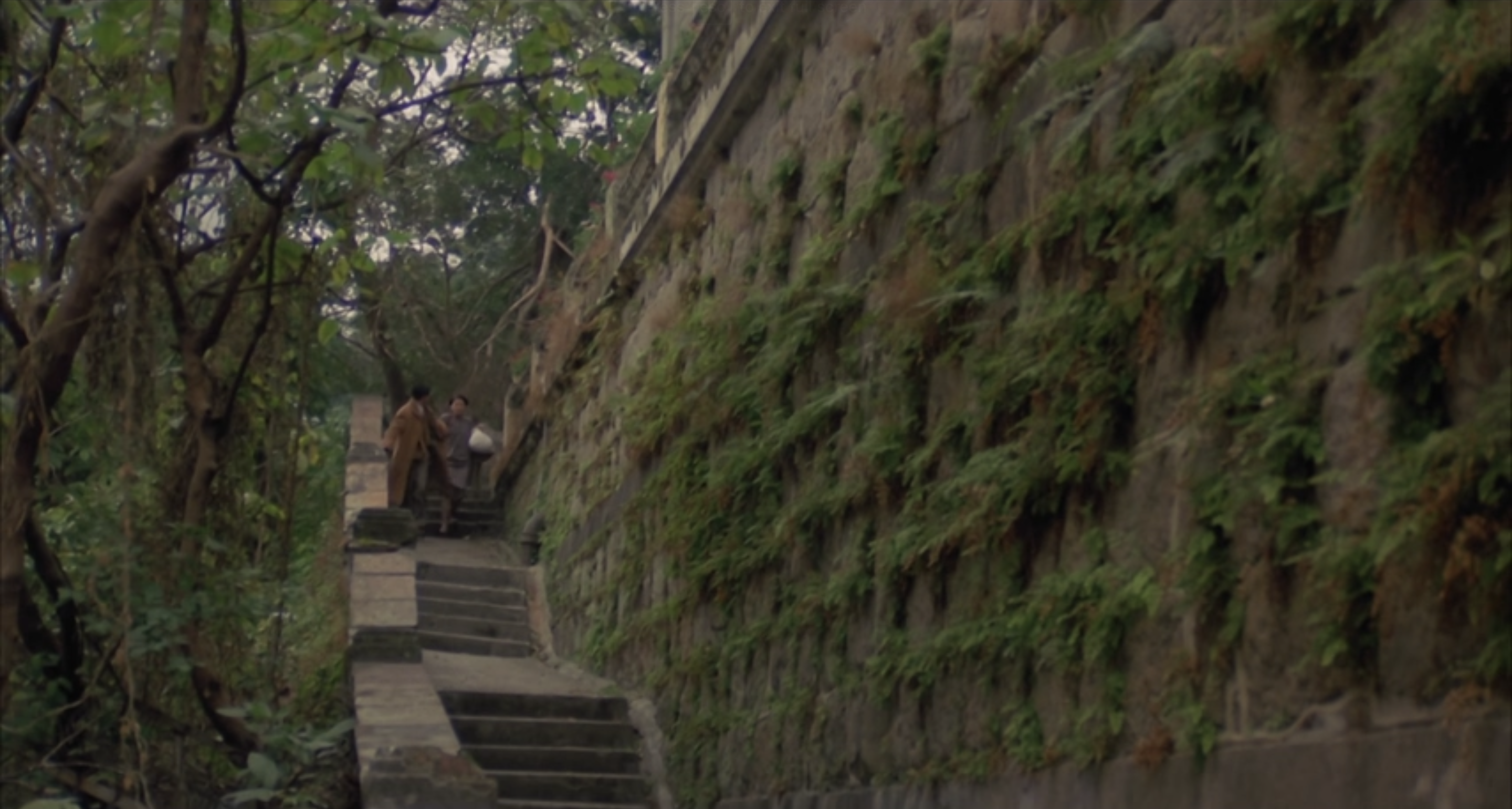
SH: The reason I suggest that voiceover might not necessarily be the best way to represent the omniscient narrator’s access to Liusu’s interiority in the text is that perhaps I see the endeavour of film adaptation as quite different from that of translation. For, as much as we use the latter as a metaphor for the former, adaptation should have the license to display much less allegiance to the source text. It’s the subject of Spike Jonze and Charlie Kaufman’s metafictional film Adaptation—a wildly funny take on the lengths writers can go in order to chase their material, in this case, how the protagonist Charlie tries to faithfully adapt Susan Orlean’s The Orchid Thief into a screenplay by resorting to (yes) a writer’s seminar, spying on his subjects, amongst other antics. In the end, although Adaptation is not a “faithful” adaptation of Orlean’s book, the film captures how artists can love their subjects so deeply that their aesthetic obsessions become an amorous one, and indeed, this is the emotional core of Orlean’s titular protagonist and his passion for orchids.
Thus, for me, representing Liusu’s interiority (undoubtedly one of the cores of Chang’s story) need not be accomplished so literally and, dare I say, might even benefit from a complete re-vision. But, Allison, I will hold back on speculating how this can be done—although I would also agree with Xiao Yue’s attention to the language of place—and speak only as an avid lover of literature and cinema (not a filmmaker): what I look out for in an adaptation is never quite the occasions it manages to represent something well in another medium, but always, I look out for the difference that a film establishes with its source. Is this not the chief pleasure of being treated to an adaptation?
AB: Our conversation echoes in a way the chief concern of the book and film: that love can be situational. In romance, the context, setting, and lovers must be aligned just so for an emotional spark to catch. In the novel, conditions were right for a reader to fall in love with Chang’s tapestry of emotion and place, but across the ocean of adaptation, when the film flirted with similar resonance, the stars didn’t quite align.
Shawn Hoo’s poems have been published or are forthcoming in journals including Quarterly Literary Review Singapore, Queer Southeast Asia, OF ZOOS, and Voice and Verse Poetry Magazine, as well as anthologies such as A Luxury and EXHALE: An Anthology of Queer Singapore Voices (both Math Paper Press, 2021). He graduated from Yale-NUS College with a BA(Hons) in Literature and was a Teaching Assistant Trainee (English Literature) at the National University of Singapore. He is assistant editor at Asymptote, and can be contacted via his email here.
Allison Braden is Asymptote’s assistant blog editor.
Xiao Yue Shan is a poet and editor. shellyshan.com
*****
Read more on the Asymptote blog:

